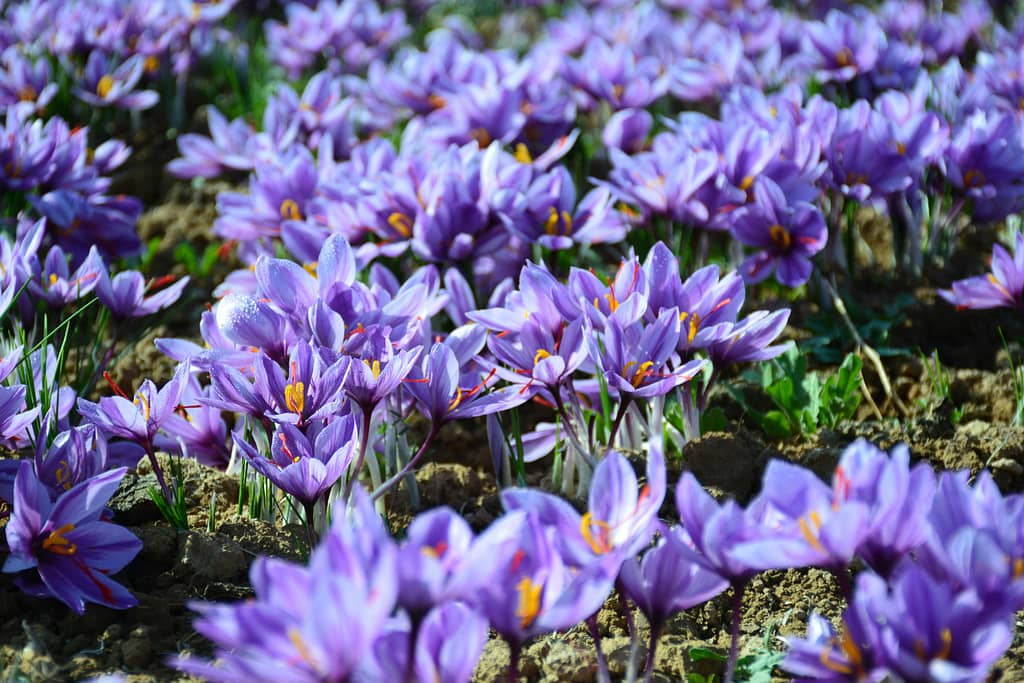A spice with a thousand virtues, saffron is reaching record prices, while its refined taste is prized by diners around the world. But beyond its prodigious coloring power—100,000 times its weight in water—and its fragrance, this “golden flower,” as it is known in Persian, has been used as an offering to the gods, a culinary condiment, a medicinal remedy, and even a plant-based deodorizer.
EDITOR’S NOTE: This article, “A Brief History of Saffron,” is excerpted from the print edition of Luxus Magazine (No. 10, Spring 2025).
With a price negotiated between 3,000 and 35,000 euros per kilo in 2020, saffron appears to be the new red gold. However, this spice, with its strong coloring power and hay-like scent, has been cultivated by humans for 5,000 years.
If saffron, “asfar” (yellow) in Arabic and “Zarparan” (golden flower) in Persian, features in the Song of Songs, Homer’s Iliad, and even curbed Alexander the Great’s ambitions in Asia Minor, it is primarily because it is extremely rare.
A miraculous harvest
With its sterile pollen, saffron does not produce seeds and therefore cannot grow in the wild. To cultivate it, its bulbs must be replanted and given constant attention. It needs a rainy spring and a dry summer. Add to this the fact that the plant must be regularly watered but never flooded.
Anyone wishing to harvest its three precious blood-red stigmas, contained in its yellow pistil and as light as air, must also harvest the plant at the right time: its autumn flowering lasts only a few days, with each flower blooming at dawn and wilting at dusk.
Finally, harvesting it is almost a sacred ritual: it takes 140,000 stigmas to obtain one kilogram of this divine coloring agent. Adding to its magical dimension, attested in Egypt by Theban papyri from the 18th and 19th dynasties, its origin remains a mystery.

Click here to read the full article on Luxus Magazine
Featured Photo: Unsplash


















